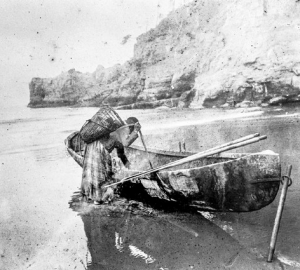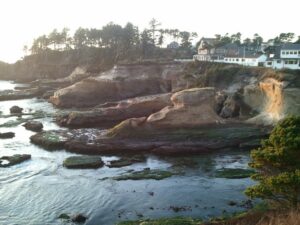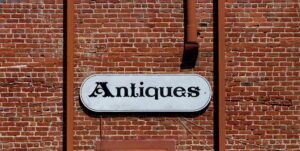By Karissa Courtney
Astoria: Chinook, Clatsop, Kathlamet, Lower Chinook
Seaside: Chinook, Clatsop, Lower Chinook
Cannon Beach: Chinook, Clatsop, Nehalem
Tillamook: Tillamook and Siletz, Tillamook
Lincoln City: Tillamook and Siletz, Siletz
Newport: Tillamook and Siletz, Yakina
Waldport: Alse (Alsea)
Yachats: Alse (Alsea)
Florence: Coos, Lower Umpqua, Siuslaw and Siuslaw
Coos Bay: Coos, Lower Umpqua Siuslaw, and Miluk Coos
Bandon: Miluk Coos
Port Oxford: Tututni, Tolowa Dee-ni
Brookings: Chit-dee-ni and Tolowa Dee-ni
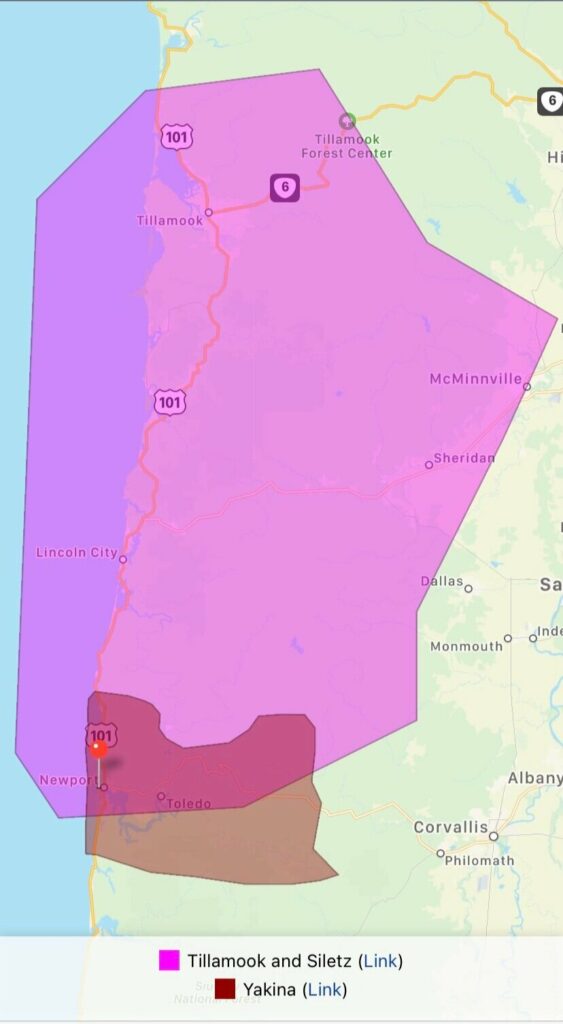
As you can see, most of the current names of places along the Oregon Coast actually are named after the Indigenous Tribes of the areas. All of these tribes, from the Northern California coast to Southern Washington coast, have been joined together in the Confederated Tribes of Siletz Indians (Clatsop, Chinook, Klickitat, Molala, Kalapuya, Tillamook, Alsea, Siuslaw/Lower Umpqua, Coos, Coquelle, Upper Umpqua, Tututni, Chetco, Tolowa, Takelma, Galice/Applegate, and Shasta). This group formed when 27 bands of Native Americans were forced onto the Siletz Reservation in the 1800s. It’s important to note that all of these Tribes have different languages and traditions, as well as histories, cultures, and legal relationships with the federal government. Finally, we need to acknowledge that we are writing this not as members of any Indigenous tribe, but as white people who now live and work on the land. Therefore, if we mistakenly got information wrong, please let us know and we will fix it.
Native Americans along the coast had many different ways of living, but there were similarities in terms of diet. They subsisted on hunting, fishing and gathering of lamprey, whale, ocean fishes, salmon, mussels and other shellfish, deer, and a variety of plants. Homes were made from cedar or sugar pine with a plank structure, sometimes reaching over 100 feet in length with the hearth slightly underground.
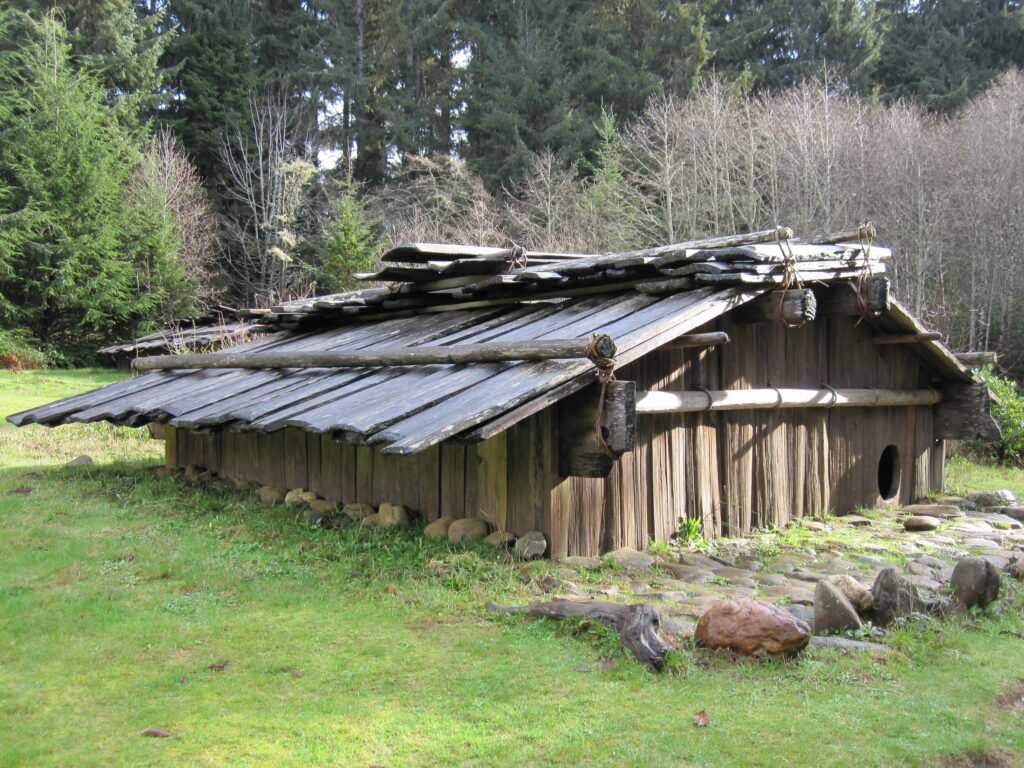
The Siletz Reservation has its roots in the trade and exploration of the West, starting as far back as the 1770s where explorers landed on the coast searching for new lands, and bringing deadly diseases.In 1787, the US passed the “Northwest Ordinance” which promised that Indian areas of interest would be protected, meaning that they would be invaded or disturbed. In 1805 Lewis and Clark made it to the Oregon Coast from the middle of the continent, the first Europeans to get there by land. After that time, fur and trapping were big money makers in the area, bringing many new settlers to the area, and in 1848 the Organic Act established the Oregon Territory (present day Oregon, Washington and Idaho).
Later, fur trading faded into farming, and there became multiple missionary settlements, one being the Methodist Willamette University in Salem. Then, in 1850, Congress passed the Oregon Donation Land Act, which promised large parcels of land in Oregon to U.S. emigrants. Because of this Act, about 2.5 million acres of Indigenous lands were claimed by white settlers and many used violent eviction to get the best land. In 1851, treaty meetings were held in the northern Willamette Valley where each tribe agreed to cede the majority of their territory, but insisted that a piece of their home lands be reserved for them. They also requested to have the right to fish in all usual areas. However, these treaties were violated. Later, from 1853 to 1855, the Native Tribes were forced to sign a total of 7 treaties, ceding the entire area from the Columbia River and the summits of the Siskiyous and from the summit of the Cascades to the summit of the Coast Range (about 15 million acres). These treaties also gave the government the authority to gather many tribes together on one reservation.
In 1855 the Coast (Siletz) Reservation was established by Executive Order for all western Oregon tribes. Over time, the size of the Siletz Reservation has been significantly reduced due to a railroad splitting it into two, and because of the Dawes Act of 1897 which placed tribal lands into allotments. Allotments gave Native Americans 80 acre parcels to be in their name, but this split the land up, removed the traditional shared land management of tribes, and heirship became an issue. Additionally, the land that was not allocated to Indigenous went to the public domain and was sold to white settlers. By 1912, over half of the Siletz Allotments were already moved out of Indian ownership. Then, in 1956, the Western Oregon Termination Act stated that those of the Siletz Tribe were no longer Indians, resulting in the sale of more of their land to settlers. About 20 years later in 1977, the Siletz Restoration Act re-recognized the Siletz as an Indian tribe. The reservation now is approximately 4,000 acres of land with 39 acres near town and the rest as timberland throughout Lincoln County. A Tribal health Clinic was built in 1991 just outside of town and is a valuable asset to the community.
Now, the Confederated Tribes of Siletz Indians owns the Chinook Winds Casino and Resort in Lincoln City, Oregon, as well as Hee Hee Illahee RV Resort, Logan Road RV Park, and Imprints Print Shop.
The Yakona Nature Preserve is located near Yaquina Bay and provides hiking trails, viewpoints, and history in a protected Sitka spruce forest. Read more about the area’s history HERE. Its a 250 acre peninsula between King and McCaffery Sloughs.
PLACES TO VISIT:
- The Burrows House Museum and Pacific Maritime Heritage Center ran by Lincoln County’s Historical Society
- Online Basketry Exhibit – Mukurtu West
References:
- “A Siletz History” (n.d.) Confederated Tribes of Siletz Indians. From: http://www.ctsi.nsn.us/chinook-indian-tribe-siletz-heritage/our-history/part-iii#content
- “History of Siletz” (n.d.) City of Siletz, Oregon. From: http://cityofsiletz.org/history-of-siletz/
- “History” (n.d.) Yakona Nature Preserve. From: https://www.yakonaoregon.org/history
- “Settlers to Siletz Reservation Agent Fairchild” (2002). The Oregon History Project. From: https://www.oregonhistoryproject.org/articles/historical-records/settlers-to-siletz-reservation-agent-fairchild/#.X-znK-lKjBI
